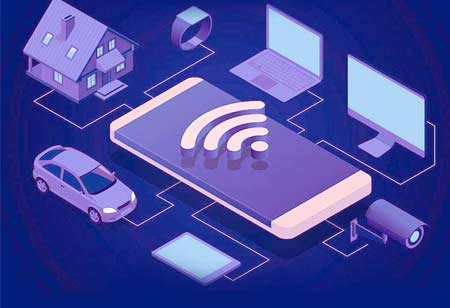THANK YOU FOR SUBSCRIBING
How Does AI Assist FIFA in Offside Detection?
In this year's World Cup, FIFA is utilising new artificial intelligence to assist referees in calling offsides.

By
Apac CIOOutlook | Friday, December 02, 2022
Stay ahead of the industry with exclusive feature stories on the top companies, expert insights and the latest news delivered straight to your inbox. Subscribe today.
New artificial intelligence can detect offsides much faster than past technology, which took over a minute on average.
FREMONT, CA:In this year's World Cup, FIFA is utilising new artificial intelligence to assist referees in calling offsides.
Twelve cameras mounted to the stadium roof serve as the semi-automated offside technology (SAOT) system, which follows the ball and each player's movements. SAOT tracks and recognises players and the ball using artificial intelligence, calculating their whereabouts 50 times per second.
The official ball for the Qatar 2022 World Cup, Al Rihla, which means the voyage in Arabic, has a sensor attached that enables SAOT to compare the precise moment it was kicked with the position of the team's last defender, the other team's striker. This level of accuracy is essential in close calls where referees struggle to swiftly signal offsides. On this, a goal or even the outcome of the entire game can occasionally depend.
The video match officials are informed whenever SAOT finds an offside. The system is described as semi-automated as a result. Soccer matches frequently employ video assistant referee (VAR) technology. They take substantially longer than SAOT to detect an offside, about 70 seconds. Officials had to determine the ideal kick time and mark the offside line without the aid of VAR technology. They only need to check the system-recommended offside with SAOT.
According to FIFA's website, the new procedure happens within a few seconds and implies that offside rulings can be determined faster and more correctly. If the referee agrees with SAOT's recommendation, the system will produce a 3D cartoon of the offside broadcast to be shown to spectators on a sizable screen in the stadium.
According to FIFA, the SAOT system is currently the most accurate offside support system accessible to video match officials after three years of testing. Video analysis is the process of understanding and extracting useful information from video footage. Computer vision is the branch of artificial intelligence that deals with this.
Consider being a machine that lacks the ability to view things as humans do. Digital cameras are used in place of eyes, which capture light and convert it to data. The information describes how each pixel appears in each frame, including the proportions of green, red, and blue in each pixel. Typically, this information appears as a massive table of values. For instance, each row would have 1920 pixels, and each column would have 1080 pixels in a 1080p film, where each frame has 1920 x 1080 pixels.
To solve this issue, data scientists have created a variety of methods. Convolutional neural networks are one of them (CNN). CNN's operate by layer-by-layer detecting things. Consider the process of attempting to identify an object in a completely dark environment to get an idea of how this works.
When pressing the item, discover it is soft in some places and hard in others. This movement alters the perception of the object because now they have sufficient knowledge to recognise that it has both soft and hard qualities. The initial layer of detection would be represented by this information. This would be referred to as the convolution in CNNs.
Following the initial layer's identification, they'll ask more questions about the object's texture, size, and shape. Each time one of these questions is addressed, a new layer arises, deepening your comprehension of the situation. This is a lot like how CNN operates.
The computer's hypothesis will be cross-checked with known things using a categorisation method once there is enough information to make educated judgments.
Normally, large video datasets of items humans have already recognised are used to teach artificial intelligence systems like SAOT, in this case, soccer players on the field. Artificial intelligence picks up on the players' appearance in this way. Following extensive training, this technology can detect and follow players with ease and speed.
The innovative system automatically alerts the video match officials inside the video operation room whenever the ball is received by an attacker who was in an offside position when a teammate played the ball by merging the limb- and ball-tracking data and applying artificial intelligence. The video match officials verify the automatically generated kick point and the automatically generated offside line, based on the computed positions of the players' limbs, before advising the on-field referee of the proposed decision. Offside decisions may be made more quickly and precisely with this technique, which just takes a few seconds to complete.
The new technology was able to support video match officials during these matches by enabling them to make offside rulings that were quicker, more precise, and more reproducible.
FIFA is proud of this achievement, and they're eager for the FIFA World Cup 2022 to demonstrate to the world the advantages of semi-automated offside technology. The implementation of semi-automated offside technology at the FIFA World Cup in 2022 is the clearest indication yet that FIFA is committed to using technology to better football at all levels.





